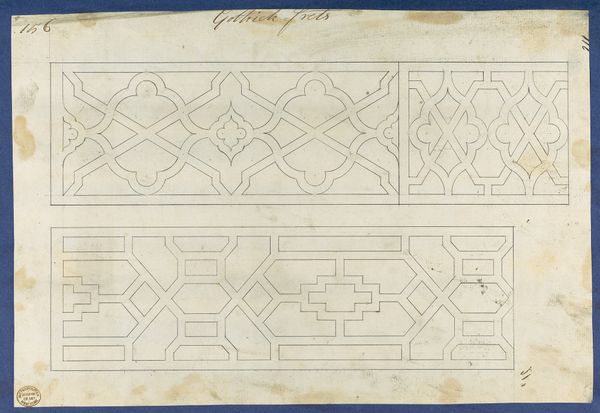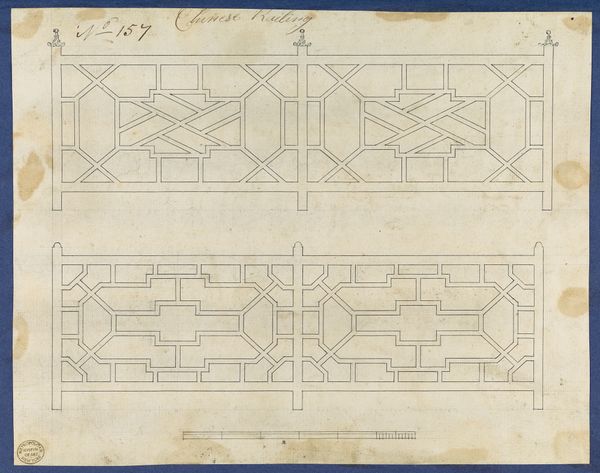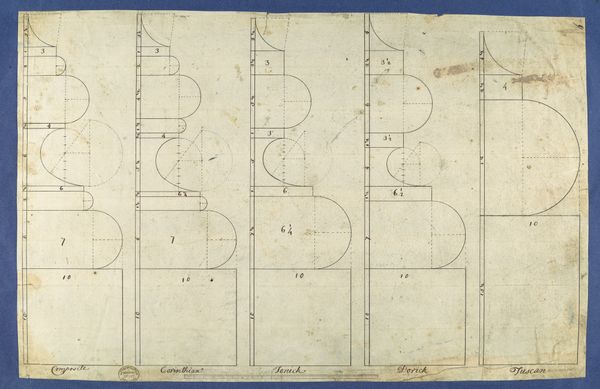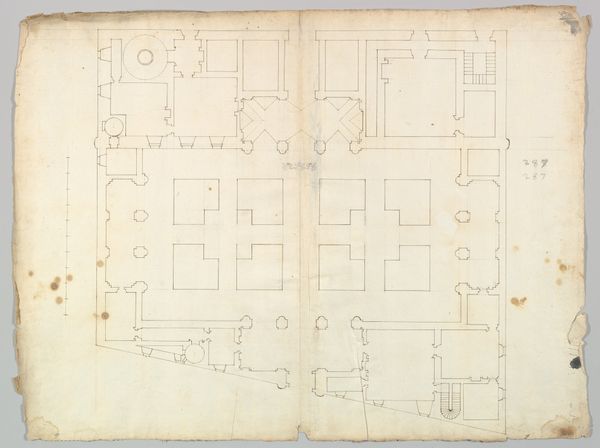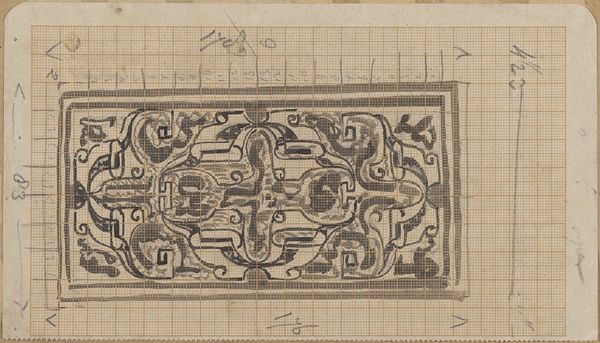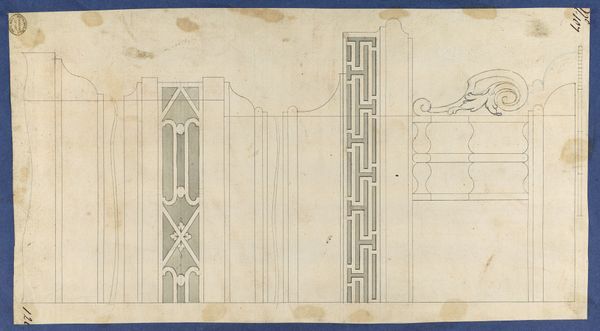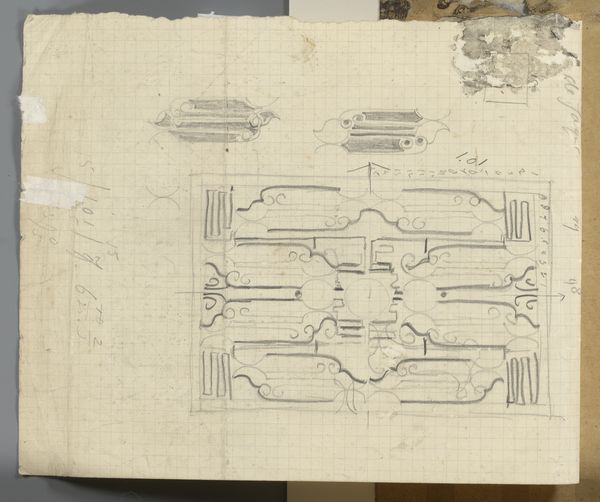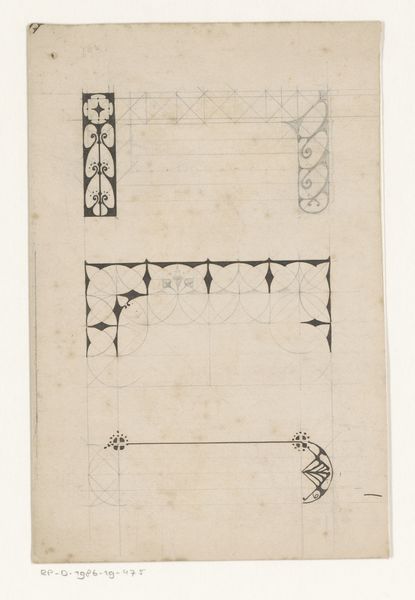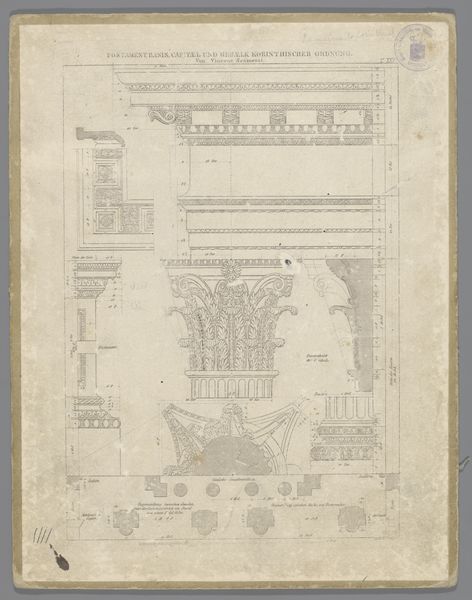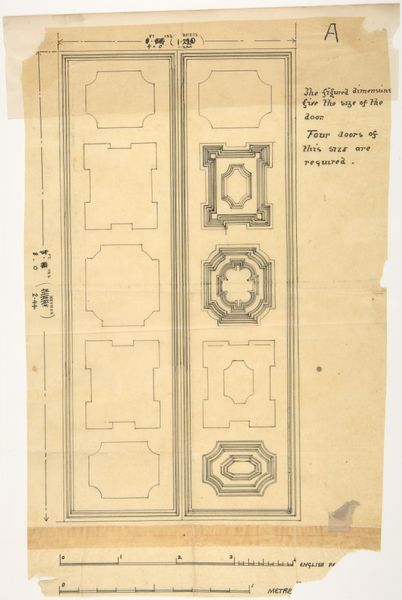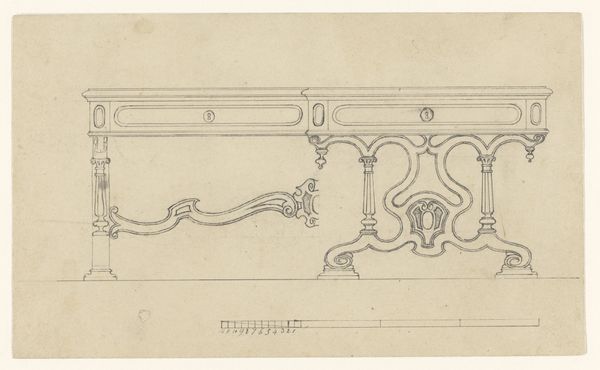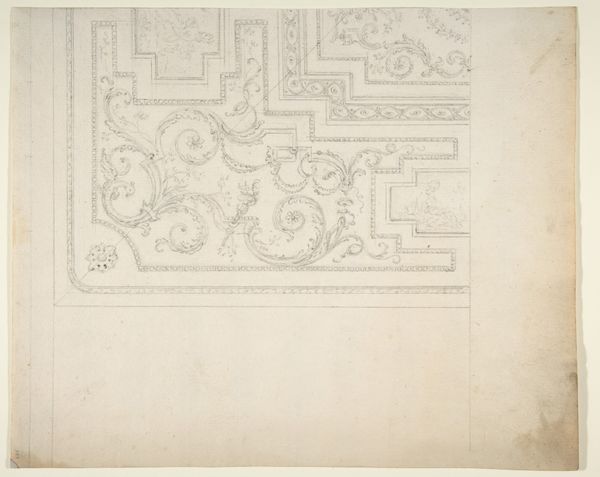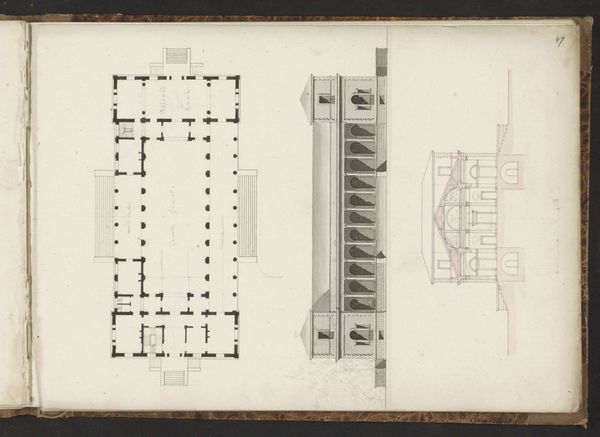
Chinese Railing, from Chippendale Drawings, Vol. II 1754
0:00
0:00
drawing, print
#
drawing
# print
#
geometric
#
history-painting
Dimensions: sheet: 8 x 10 3/8 in. (20.3 x 26.3 cm)
Copyright: Public Domain
Curator: Before us, we have "Chinese Railing, from Chippendale Drawings, Vol. II," created around 1754 by Thomas Chippendale. It’s a print, and drawing housed in the Metropolitan Museum of Art. Editor: There’s something very pleasing about the repetition here. The simple lines create intricate patterns, especially in the lower design; it’s incredibly visually balanced and symmetrical. Curator: Yes, the formal construction emphasizes geometric components—rectangles, squares, and diagonal lines—all methodically arranged. The stark lines define positive and negative spaces, contributing to a visual harmony that almost vibrates. Editor: But consider Chippendale himself. He was not only an artist but a businessman who designed and produced furniture. These drawings were likely templates. They would be executed in wood by a whole workshop of skilled artisans. Did they feel connected to the final design? How did the division of labor shape the finished product? Curator: An astute observation. The designs reflect Rococo and Gothic influences adapted through a Chinoiserie lens—visible here as highly abstracted interpretations. However, in pure formalist terms, it's more than simple cultural pastiche; it’s about the relationships of line, form, and surface treatment. Editor: True, but those lines had to be cut, assembled, and finished, likely with imported hardwoods, stains, and lacquers, involving colonial trade routes and consumer desires for exotic, handcrafted goods. Even the paper here represents global resource streams that supported art production in 18th-century London. Curator: An interesting point, contextualizing art-making as global. And to move back to formal design—note how this precise drawing would dictate the final look with extreme accuracy. The design and structure dictates an aesthetic ideal of 18th-century symmetry. Editor: Exactly, and thinking about those 18th-century customers acquiring the designs, materials, or complete construction. Today we see both the artistic vision, and imagine those artisans interpreting the pattern on this paper into objects for consumption. Curator: A fascinating glimpse into design and artistic intentions through pure visual form! Editor: A true material testament, illuminating creation, manufacture, and design in Georgian era furniture!
Comments
No comments
Be the first to comment and join the conversation on the ultimate creative platform.
